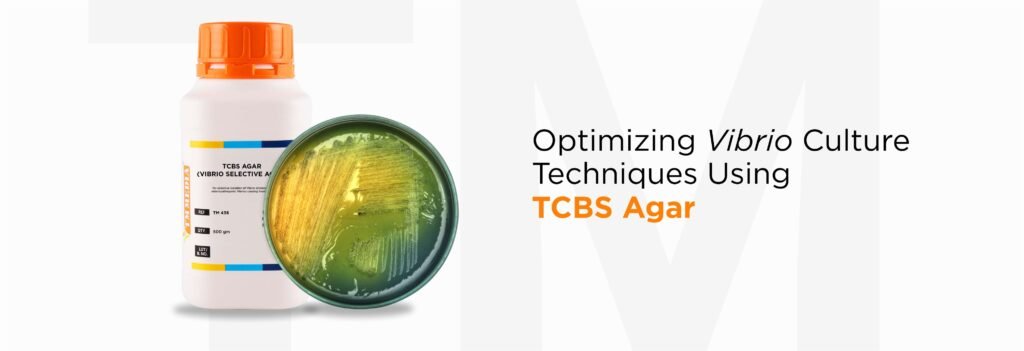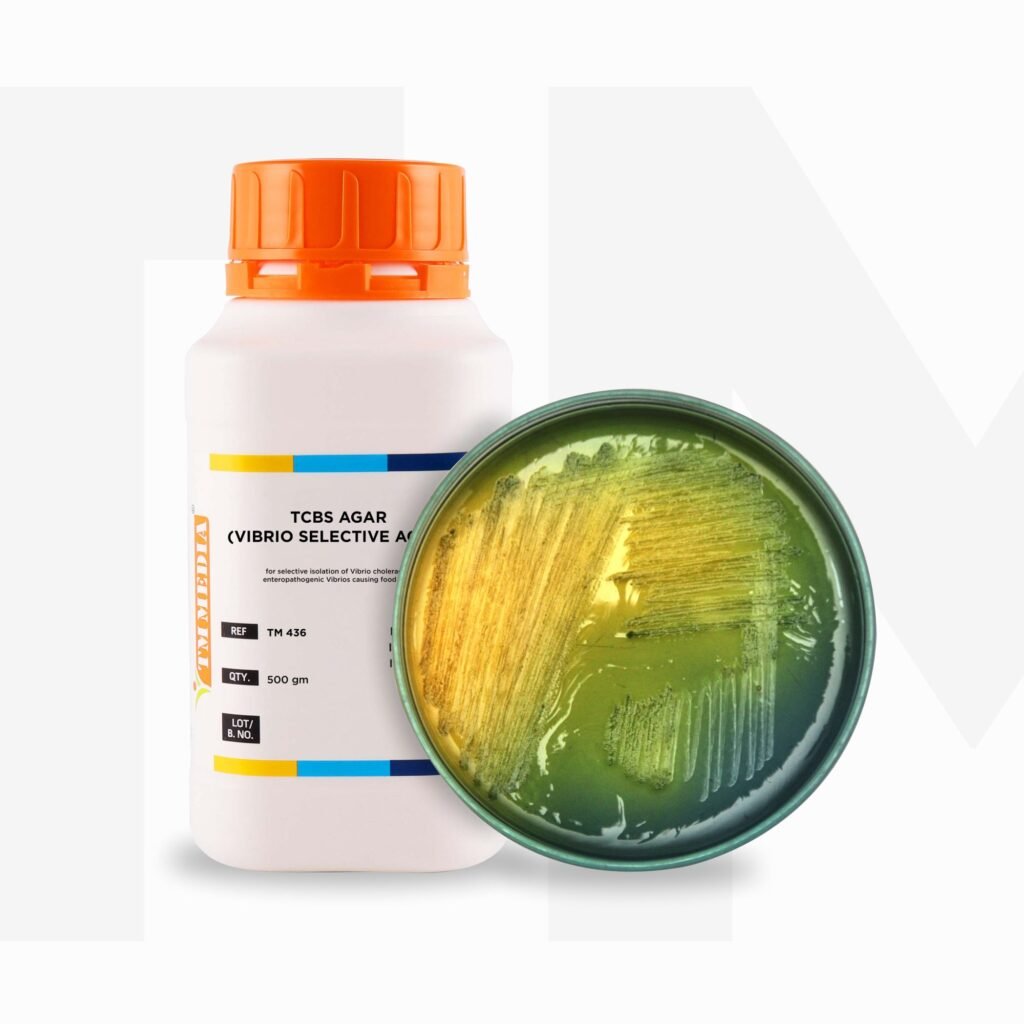

In the world of pathogenic identification, one crucial player in the isolation and cultivation of Vibrio species is Thiosulfate-citrate-bile salts-sucrose (TCBS) Agar. Developed by Kobayashi, this selective differential medium has become a staple in laboratories for its effectiveness in isolating Vibrio cholerae and other Vibrio species from various specimens.
What is TCBS Agar?
TCBS Agar finds its purpose in selectively isolating Vibrio cholerae and other enteropathogenic Vibrios from clinical specimens. Originally designed for V. cholerae and V. parahaemolyticus, it accommodates most Vibrios, showcasing diverse colonial morphologies. Enrichment in Alkaline Peptone Water, followed by isolation on TCBS Agar, is a routine method for V. cholerae isolation. The additional ingredient, sodium cholate, enhances selectivity, although some strains of Pseudomonas and Aeromonas may form colonies, making H2S negativity on TCBS Agar presumptively positive for Vibrio.
Constituents of TCBS Agar
Let’s break down the key constituents of TCBS Agar:
| Ingredients | Concentration (Gms/Ltr) |
| Peptone, special | 16.000 |
| Yeast extract | 5.000 |
| Sodium citrate | 10.000 |
| Sodium thiosulphate | 10.000 |
| Sodium cholate | 3.000 |
| Sucrose | 20.000 |
| Sodium chloride | 10.000 |
| Ferric citrate | 1.000 |
| Bromo thymol blue | 0.040 |
| Thymol blue | 0.040 |
| Agar | 15.000 |

Principle
TCBS Agar’s principle revolves around providing nutrients, inhibiting unwanted bacteria, and allowing selective growth based on Vibrio metabolic characteristics. The media’s alkaline pH enhances recovery, and the sucrose fermentation by Vibrios results in characteristic colony colours.
Preparation
To prepare TCBS Agar, dissolve 89.08 grams in 1000 ml purified water, heat to boiling, avoid autoclaving, cool to 45-50°C, mix well, and pour into sterile Petri plates.
Interpretation
Observing cultural characteristics after incubation is crucial:
Why should you not autoclave TCBS Agar?
The decision to boil TCBS Agar, not autoclave, reflects the delicate dance between providing a conducive environment for Vibrio growth and preserving the integrity of the media. Autoclaving, a common sterilization method, is avoided due to many reasons:
Sucrose Browning: TCBS Agar contains sucrose, a fermentable carbohydrate crucial for Vibrio metabolism. Boiling is preferred over autoclaving to prevent the caramelization or browning of sucrose, ensuring that the medium retains its essential properties. The characteristic yellow colonies produced by Vibrio cholerae are a direct result of sucrose fermentation. Altering this process through autoclaving could impact the reliability of the media for selective isolation.
Chemical Alteration. The delicate balance of nutrients, inhibitors, and pH indicators in TCBS Agar is finely tuned for the selective growth of Vibrios. Any deviation from the recommended preparation method, such as autoclaving, introduces an element of unpredictability into the process, jeopardizing the reliability of results in microbiological studies.
For more information, please visit our website.
Summary
Discover the power of Thiosulfate-citrate-bile salts-sucrose (TCBS) Agar in optimizing Vibrio culture techniques. Developed by Kobayashi, this selective medium, enriched with sodium cholate, effectively isolates Vibrio species. The delicate dance of TCBS Agar involves boiling, not autoclaving, to preserve its integrity, crucial for successful Vibrio growth. TM Media, a pioneer in microbiological solutions, proudly supports laboratories worldwide, providing the precision and reliability needed for groundbreaking discoveries. Visit our website for more information.
Microbiology, as a scientific discipline, relies heavily on precise tools and methodologies for understanding the details of the microbial world....
Read MoreIn plant tissue culture, Murashige & Skoog Medium, commonly known as MS Medium, stands as an iconic formulation that has...
Read MoreIn the microbiological world, the choice of Culture Media plays a pivotal role in the accurate identification of microorganisms. One...
Read MoreNutrient Agar is a versatile and valuable tool for researchers and industry professionals alike. It offers a platform for the...
Read MoreFirst Name * Last Name * Primary Email * Company * Department Office Phone * Country * Select Value Afghanistan...
Read More